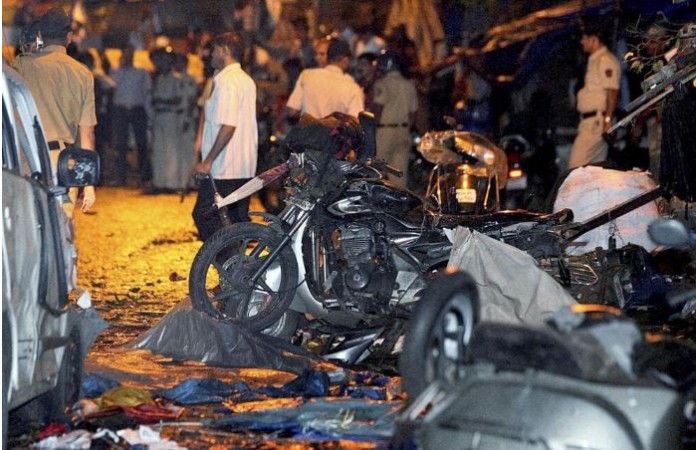In a shocking turn of events, the bustling metropolis of Mumbai, India, was struck by a series of coordinated bombings on July 13, 2011. The multiple attacks unfolded across the city, targeting crowded areas and transport hubs, leaving a trail of devastation, loss of innocent lives, and a deep scar on the nation's psyche. This tragedy stands as a stark reminder of the persistent threats posed by terrorism and the resilience of a city that refuses to bow down.
Details of the Attacks: The 2011 Mumbai bombings consisted of three separate explosions, meticulously orchestrated to cause maximum damage and sow fear among the population. The coordinated attacks occurred during the evening rush hour, a time when the city's streets and transportation networks were filled with commuters.

1. Zaveri Bazaar: The first blast rocked Zaveri Bazaar, a renowned jewelry market in South Mumbai. This bustling commercial hub was targeted due to its densely populated streets and the presence of numerous shops and establishments. The explosive device, concealed in a motorcycle, was detonated with deadly precision, resulting in a devastating blast that ripped through the area. The explosion caused immense chaos, with shattered glass, debris, and the cries of the injured creating a scene of horror.
2. Opera House: Almost simultaneously, a second bomb exploded at Opera House, a busy neighborhood known for its trading activities. The blast took place in a crowded commercial building, where merchants and workers carried out their daily routines. The impact of the explosion was catastrophic, shattering the structure and causing widespread destruction. The victims, many of whom were trapped under the rubble, faced unimaginable suffering.
3. Dadar Kabutarkhana: The third and final explosion occurred at Dadar Kabutarkhana, a bustling railway station in central Mumbai. This area served as a major transportation hub, connecting countless commuters to different parts of the city. The bomb, concealed inside an electric meter box, was triggered during the evening rush hour when the station was teeming with people. The blast unleashed havoc, leading to scenes of panic, injured passengers, and shattered lives.
Aftermath and Investigation: In the aftermath of the bombings, the city of Mumbai was plunged into chaos and despair. The blasts claimed the lives of 26 innocent people, with more than 130 individuals suffering severe injuries. The emotional toll on the survivors and the families of the victims was immeasurable, as they grappled with grief and sought answers in the wake of this senseless act of violence.
Indian security agencies swiftly initiated a comprehensive investigation into the bombings. The process involved collecting evidence from the blast sites, scrutinizing surveillance footage, and launching a manhunt to identify and apprehend the perpetrators behind these heinous acts. Over time, diligent police work and intelligence efforts led to the identification and capture of individuals associated with the attacks.
Conclusion: The 2011 Mumbai bombings left an indelible mark on the city, its residents, and the nation as a whole. The tragic events serve as a stark reminder of the ongoing struggle against terrorism, underscoring the need for continued vigilance and comprehensive security measures. The spirit of Mumbai, renowned for its resilience and unity, shone through as citizens and authorities came together to rebuild shattered lives and stand firm against those who sought to sow fear and division.
Tax Could Affect The Gaming Industry in India
Delhi HC Dismisses Plea to Postpone UPSC Mains Exam Amidst Pandemic
PV Sindhu, Lakshya Sen advance to 2nd round in US Open 2023 Badminton

